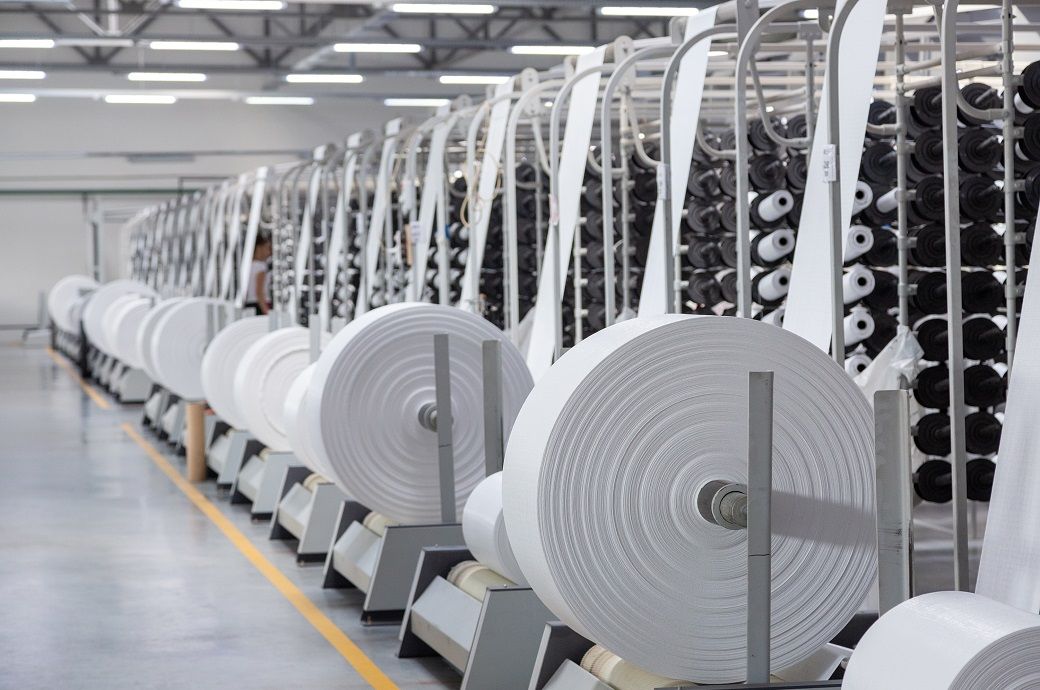Fashion
Swiss shoemaker On names new COO to help challenge bigger rivals

By
Bloomberg
Published
September 30, 2025
On Holding AG appointed a new chief operating officer (COO) as the Swiss brand looks to scale up innovations like its Lightspray shoemaking robots and take more market share from rivals Nike Inc. and Adidas AG.
Scott Maguire, who joined as On’s chief innovation officer in March after stints at Specialized Bicycle Components and Dyson, will now have a dual role to “oversee the integration of innovation and operations,” the company told Bloomberg Tuesday. He will take over as COO in January.
His task will likely involve efforts to scale up the Lightspray robots that On has used to make high-end marathon sneakers and talked of expanding for the production of other footwear. The project is already overseen by Maguire.
The current COO, Samuel Wenger, is leaving to pursue other opportunities in the startup world, according to an internal memo he wrote seen by Bloomberg.
Wenger joined On in 2017 and helped steer it through a period of hyper growth. He helped build On’s sourcing office in Vietnam, set up its first retail stores and oversaw the finance division following its initial public offering in 2021.
Founded in 2010, Zurich-based On has achieved rapid growth by winning fans in the running world with its light and comfortable footwear and expanding its business into tennis, outdoors and apparel. The company is entering the final year of its three-year strategy outlined in October 2023, which called for a doubling of net sales and achieving high profitability.
Going forward, On will need to keep expanding into new markets, especially in Asia, to maintain growth. Its sneakers are among the most expensive in the industry, with the popular Cloudsurfer Max model selling for 180 dollars. That’s helped it stay highly profitable despite the turmoil caused by President Donald Trump’s trade tariffs and other macroeconomic uncertainty.
Even so, shares of On have dropped 20 % this year, slightly less than Adidas but more than Nike, which is recovering after a series of recent stumbles.
Fashion
Mexico’s apparel sourcing from Asia-Pacific tops $4 bn in 3Q 2025

Between January and September ****, Mexico imported apparel worth $*.*** billion, covering *.*** billion garment pieces. Of this, *.*** billion pieces—equivalent to **.** per cent of total import volume—originated from Asia-Pacific suppliers, according to *fashion.com/market-intelligence/texpro-textile-and-apparel/” target=”_blank”>sourcing intelligence tool TexPro. While the value share improved from **.** per cent in the corresponding period of ****, the import volume dipped slightly from *.*** billion pieces to *.*** billion, indicating a higher average unit value as buyers shifted towards higher-value or better-quality product categories.
In comparison, apparel imports in the first nine months of **** were $*.*** billion (*.*** billion pieces), of which the Asia-Pacific region accounted for $*.*** billion or **.** per cent. On a full-year basis, Mexico imported apparel worth $*.*** billion in ****, including $*.*** billion from the region (**.** per cent share). The annual trend suggests that Asia-Pacific’s contribution has consistently remained close to ** per cent since ****, when total imports stood at $*.*** billion, followed by $*.*** billion in **** reflecting sustained reliance on Asian hubs for mass-market fashion, basics, and fast-moving apparel categories.
Fashion
India’s textile industry eyes full value addition after QCO removal

R K Vij, secretary general of the Polyester Textile Apparel Industry Association (PTAIA), told Fibre2Fashion, “India has taken a bold step making Indian textile products competitive in the global market. The QCOs earlier led to increased raw material prices of the entire textile value chain affecting the growth of Indian MMF industry, both in terms of domestic growth as well as export competitiveness. The apparel and textile sector essentially uses two kinds of raw materials. Any non-tariff barrier like QCOs, anti-dumping duty on the basic raw materials should not be there but the same could be put on the value-added products like fabrics and garments so that the import of these value-added products could be restricted.”
India’s removal of QCOs on polyester value chain products has boosted industry confidence, with leaders saying it will lower raw material costs, improve global competitiveness, and support MMF-led growth.
SIMA and PTAIA leaders welcomed the move, urging similar action for viscose staple fibre and filament yarn to capture emerging global market opportunities.
“With the phasing out of QCOs, Indian textile industry will be able to sustain its fullest growth potential not only in the domestic market but also in the most competitive global markets with the availability of raw materials till the stage of fibre and yarn at internationally competitive prices”, Vij stated.
Previously, the rapid rise in QCOs increased compliance costs, caused delays, and led to supply chain disruptions for the MSME sector. However, the removal of QCOs on textile products and their raw materials is expected to ease compliance burdens and positively impact industrial supply chains.
Durai Palanisamy, chairman of the Southern India Mills’ Association (SIMA), thanked the government for removing the QCOs, stating that this path-breaking reform marks a major milestone in positioning India as a global hub for manmade fibre (MMF)-based textiles and apparel. In a statement, he noted that removing the QCO on terephthalic acid and ethylene glycol—key raw materials for manufacturing polyester fibre—is a welcome move that will improve raw material availability and boost competitiveness. Overall, the decision is expected to accelerate growth across the MMF textile value chain, including yarns, fabrics, garments, made-ups, and technical textiles.
The SIMA chairman further observed that easing QCOs will streamline imports of polyester and its raw materials, ensuring uninterrupted supply to spinners, weavers, and processors. Competitive imports are likely to stabilise domestic prices, reducing cost pressures on downstream manufacturers and exporters.
He also appealed to Prime Minister Narendra Modi to remove the QCO imposed on viscose staple fibre (VSF) and filament yarn, which must be made available at internationally competitive prices and in an uninterrupted manner to seize emerging global market opportunities.
Fibre2Fashion News Desk (KUL)
Fashion
MS Printing Solutions presents waterless digital systems at ITMA ASIA

The companies presented systems that merge MS machinery, dryers and software with JK Group’s high-performance inks to create a streamlined, resource-efficient process tailored for modern textile production.
MS Printing Solutions and JK Group showcased advanced sustainable digital textile printing technologies at ITMA ASIA + CITME Singapore 2025, featuring a fully integrated, waterless pigment printing workflow.
The system minimises water, chemical, and energy use, improves efficiency, supports on-demand production, and helps manufacturers meet global sustainability and profitability goals.
A key highlight was the waterless pigment printing process, which removes the need for traditional steaming and washing. This approach sharply cuts water and chemical usage while lowering energy demand and operational costs. By simplifying production, the technology supports manufacturers in reducing environmental impact and progressing towards global sustainability standards required by international supply chains.
The integrated system also supports near on-demand production, enabling mills to align output more closely with actual demand. This helps reduce overproduction and the billions of garments wasted every year. MS Printing Solutions further demonstrated enhanced workflow efficiency through intuitive software that speeds up calibration, improves colour yield and delivers higher brightness.
Explaining how their solutions simplify operations while lowering production costs, Massimo Cavazzini, global sales lead at JK Group and MS Printing Solutions, told Fibre2Fashion in an earlier interview, “Choosing our solution means choosing digital printing—bringing customisation, flexibility, and efficiency to the forefront. With no limits on print runs and fewer production steps, manufacturers benefit from shorter time-to-market and lower costs. We have also engineered an advanced process monitoring system to ensure long-term ink reliability, maximising profitability for our clients. Our global vision is strategically designed to support local markets and customer preferences, while enhancing efficiency, productivity, and service through operational synergies. In essence, you print what you want, when you want, and only pay for what you need.”
Fibre2Fashion News Desk (HU)
-

 Entertainment1 week ago
Entertainment1 week agoChina unveils£5.4 bn Fujian, its most advanced aircraft carrier yet
-

 Politics1 week ago
Politics1 week agoIDF lawyers warned of possible Gaza war crimes: US intel findings
-

 Entertainment1 week ago
Entertainment1 week agoRobert Pattinson jokes about competing with Gen Z
-

 Tech1 week ago
Tech1 week ago‘Vibe coding’ named word of the year by Collins dictionary
-

 Sports1 week ago
Sports1 week agoWho’s the striker beating Mbappé, Haaland in race for European Golden Shoe?
-

 Business1 week ago
Business1 week agoBudget tax hikes could see food prices soar, major supermarket boss warns
-

 Sports1 week ago
Sports1 week agoIsraeli cycling team loses top sponsor despite honoring request to remove country from name
-

 Tech1 week ago
Tech1 week agoThe Government Shutdown Is a Ticking Cybersecurity Time Bomb
















